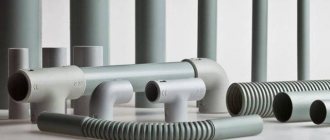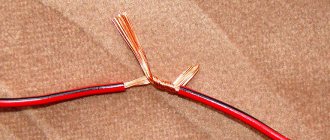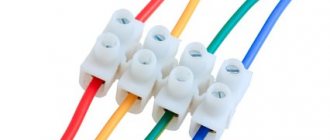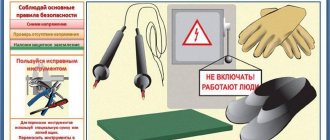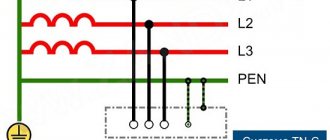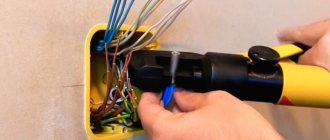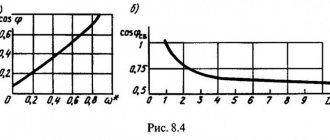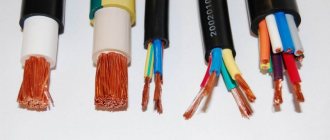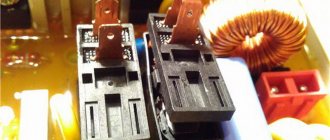Peculiarities
When carrying out a major renovation, a person changes everything in his house, including the wiring.
A new junction box is installed where wiring needs to be done. To do this better, it is best to use terminal blocks. This is an excellent device that will provide tight fixation for the entire period of operation. Today, new types of this product are being produced, which are many times superior to screw ones. To carry out installation and wiring, a person will need a minimum of time. This was largely made possible thanks to self-clamping terminals.
When to connect cables
Cable connections will be required in case of poor-quality wiring performed earlier, or due to errors made during installation work. To restore power to the house, you need to connect the electrical wires. You can make a connection in ways that are divided into 2 groups:
- For the first group, no special equipment is required.
- The second group already requires certain skills and professional tools.
Work on connecting cables must be carried out in compliance with safety regulations.
Connecting wires correctly and safely
At first glance, connecting several cords does not present any difficulty. The main thing is to choose a method, tune in and start. However, there are many subtleties in working with electrical wires, which are very important to know and observe. A mistake made can result in a very sad outcome not only for the performer, but also for the residents of the house. So, experts recommend:
- Be sure to turn off the electricity before working with electrical wires, replacing lamps and similar work. This is the most important and most broken rule.
- Don't neglect protection. It is important to use rubberized gloves, tools with insulated handles, and follow other safety precautions.
- Strip the wire with tools designed for this purpose. Very often they are cleaned with blades, knives and even screwdrivers. If the wire is damaged, you can waste a lot of time doing useless work. And the damaged part of the wire may simply not be enough.
- It is important to clean the surface from the oxide film. Its presence is unacceptable.
- When crimping a wire with a sleeve, be sure to select the desired sleeve in size. No matter how much you try to compress the sleeve more than required, such a connection will not be safe.
- When making a clamp with a terminal block, it is important that it goes into the insulating layer. Exposed wires are an unsafe connection. Such connections may cause short circuits and fire.
- After finishing the work, be sure to check the connection of the wires for strength. It doesn't matter what type of wire is connected, even spring terminals need to be double-checked. But this stage is often ignored, and in vain.
- It is better to take any wire with a small margin, since this will make it much more convenient to work when connecting in hard-to-reach places. And the load on the clamp will be reduced.
- When using a terminal box, it is very important to maintain safe distances between wires. If they are too close to each other, overheating and fire are likely.
- When purchasing a clamp, regardless of type, it is very important to pay attention to quality. You should not buy a fake. It is better to choose an original from a less expensive company. Such a connection will be of the highest quality and reliability.
Causes of malfunction and main elements
Broken wires are a common occurrence and most often occur unexpectedly. Most popular problems:
- Poor contact with various equipment;
- Short-term loss of light;
- Strong heat generation in some areas.
To prevent breakdowns, it is necessary to detect the problem in a timely manner and take appropriate measures to eliminate it. For fixation, it is best to use terminal blocks, as they can provide a person with reliability and durability. In addition, they are easy to install, which will allow you to use them at home without any problems.
Today in stores there are hundreds of varieties from top companies, which differ in price and technical parameters. But besides this, the difference may lie in the method of fixation.
All terminals consist of two elements:
- Plastic case, which is made in the form of cells;
- A brass pipe with a threaded hole on both sides.
When fixing the cable, it is important for a person to remember that the pipe may differ in diameter, especially if you plan to connect thick wires. Therefore, you first need to choose the right size. This installation can be used in any area: from household to car wiring repair, which makes the product universal. Most often, the element is used when connecting a lamp with a short conductor.
It is important to know the negative sides of such fixation:
- Self-clamping options are designed for use with specific cables. They are not suitable for connecting elements with a larger cross-section.
- If a person bought disposable terminal blocks, then he should remember that they cannot be used to fix flexible wires, since they are not intended for this.
- It is also worth understanding that the product is afraid of exposure to high temperatures. If it is constantly used in such an environment, then over time the spring will weaken, causing the contact pressure to decrease and the connection density to be lost.
- The terminals provide good fixation, but if you have the opportunity and experience to carry out soldering, then it is better to do it, it will be much more reliable.
The main advantage of the element is the ability to connect copper and aluminum wires. In addition, by using terminal blocks, the chance of contact oxidation is reduced significantly. This became possible due to the fact that the screw clamps the cable so tightly that contact between the cores becomes impossible.
A few rules for a man who wears a tie clip
Tie clip. A stylish decoration for a man’s business or casual suit, emphasizing the status of its owner. Our catalog presents a collection of clips for wide and narrow ties made of high-quality alloy.
A few rules for a man who wears a tie clip.
How to properly secure the clamp?
- Put on a shirt and tie a tie in a knot that is comfortable for you. — The tie should be located strictly in the middle of the placket on which the buttons of the shirt are fastened. - Pull the tie up a little. Then, between buttons 3 and 4, position the clip parallel to the floor. — The clip should grip both ends of the tie and the shirt. His job is to secure both ends of the tie to the shirt! — The clip should not pull the tie down. - Now button your jacket and make sure that the clip is level and visible. The tie clip should always be positioned perpendicular to the tie. Always make sure that it does not move at any angle while wearing it.
How to choose the right clip for a tie and shirt?
— The length of the clip should be less than the width of the tie and be between 1/2 and 3/4 of the width of the tie. The narrower the tie, the smaller the clip. For narrow ties we offer clips 45 mm long, for classic ties 50 mm, for wide tie models – 55-65 mm.
— Do not wear the clip with a vest and cardigan. A tie clip is never worn with a vest, as the vest itself serves a similar function. This rule also applies to cardigans.
— It is advisable to choose a clip and a tie together, focusing on combinations of shades and styles. — When choosing a tie clip, try to match the color of the metal with other accessories: cufflinks, watches, bracelets or rings. The only exception is the wedding ring. If you wear yellow metals, a gold alloy tie clip will be more suitable; If you prefer white metals, choose a silver tie clip. — The color of the metal is chosen taking into account the color of the suit, shirt and tie. Silver-colored clips go harmoniously with clothes in cool colors, such as purple, blue, gray, blue or green ties. If a warm palette dominates the image, it is better to choose models made of golden-colored metal. — For ties with small patterns and plain colors, classic clips and models with decorative inserts are suitable. If the tie is made of fabric with a large pattern and bright texture, then it is better to opt for smooth clips without engraving or stones.
Most of the clamps presented in our online store have a simple and concise design. They differ only in the design of the front side: carved patterns, enamel or decorative inserts are placed on it. Installation of 1-2 small stones is allowed. All tie clips from the German brand Lindenmann are made of high-quality nickel-free alloy with rhodium plating. What does a high-quality alloy mean?
Metal alloys easily react with oxygen and human skin.
Upon contact with the human body, the metal begins to change color and lose some properties. Exceptions are alloys with a persistent galvanic coating, which results in high-quality, incredibly wear-resistant products that do not cause allergies. Of course, allergies are quite an individual phenomenon, so they manifest themselves in different people under different circumstances. It is better to protect yourself from possible allergic manifestations on the skin and not wear products with a high nickel content. In such cases, give preference to metal products that come into contact with your skin, made of medical surgical steel and ensure that the material does not include nickel in any case. At the same time, it is necessary to understand that the indication of the absence of nickel on the surface of the product (“Nickel-free”) does not mean that they do not contain this metal at all. It only means that they are coated with a layer or coating that does not contain nickel. Therefore, carefully monitor the material from which this or that product is made. The more nickel a particular alloy contains, the more likely it is that slightly acidic human sweat will release nickel ions from the material when the jewelry comes into intense contact with the skin. Since 2000, the European Union has adopted a number of directives and regulations limiting the nickel content in any products that come into contact with the skin and setting its limits. How to care for and store clamps?
Like any piece of jewelry, a tie clip needs proper storage and care. To avoid damage and scratches, we recommend storing each clamp in a separate box on a soft pad. It is in this packaging that you can purchase the product in our online store. If the product becomes dirty or dull, it needs to be cleaned. Use a special liquid for jewelry for this or prepare a cleaning mixture yourself at home. To do this you will need ammonia; mix it with cool water in a ratio of 1:10. Immerse the clamp in the resulting solution for 10-15 minutes. Then wipe dry with a cloth and polish.
A tie clip is appropriate for business meetings, social and special events, and for a casual suit in the office. You should not wear a clip with colorful shirts and jeans, it will not be entirely appropriate. Thanks to the variety of models, it will not be difficult for you to choose a clip for any tie.
Advantages and disadvantages of connecting wires with terminals
Let's consider the positive qualities of using terminals. These are the following advantages:
- connection security;
- the occurrence of a spark is excluded;
- durability and reliability during operation;
- high degree of rigidity;
- simplicity during installation.
You can use the terminals yourself. During installation, use a regular screwdriver. During installation, it is important to know how to connect the wires in the junction box.
The choice of connection method depends on the material of manufacture of the cores, their cross-section, the number of wires and installation conditions.
The internal structure of the terminal with levers.
What are they needed for.
In electrical engineering practice, there are a certain number of ways in which wires can be connected:
- Using self-clamping terminal blocks.
- Using screw terminals.
- Connecting insulating clamps (PPE).
You might be interested in Description of SIP wire 2x16
Many have also encountered this method as twisting. However, not everyone knows the fact that twisting is a prohibited (according to the rules of electrical installations) method of connecting wires, which does not guarantee the proper degree of safety.
Important! Clamps are special products whose main task is to create a high-quality, reliable and safe connection of two or more wires.
Twist
This method is used in the absence of special tools and additional devices. The wires are twisted and wrapped with electrical tape. This option is reliable, but you need to follow some rules. Copper twists only with copper, and aluminum with aluminum. It is forbidden to twist copper and aluminum products, as this causes an electrolysis process and destroys the components. The twisting option depends on the material, diameter and purpose of the connection.
The modern version of twisting is performed without pliers, but with the help of special polymer caps, inside of which there is a metal spiral. To make the connection, the ends of the wires must first be stripped to a distance of 15 mm, and then inserted into the cap. Then the body is turned all the way.
Pros of twisting:
- simple technology;
- available materials.
Minuses:
- Do not connect aluminum and copper wires;
- not very high quality connection.
This option is suitable for temporary wiring.
Twisting wires
Important! Twisting is not used in rooms with high humidity or in buildings made of wood.
Stranded and single-core
When connecting multi-core wires, the following rules should be followed:
- strip the insulation by 4 cm;
- unwind the conductors by 2 cm;
- connect to the junction of untwisted conductors;
- twist the wires only with your fingers;
- You can tighten the twist using pliers;
- bare wires are insulated with special tape or heat shrink tubing.
Terminal blocks
One of the simplest, but at the same time reliable methods of switching is the use of terminal blocks. There are many such devices, but the screw connection is mainly in demand. Today you can purchase various devices, which must be selected in accordance with the size of the wires.
The terminal block is a structure in a plastic case. Sockets or metal plates are soldered into it. The bare core is inserted inside and then clamped with a screw. After this, you need to make sure that the fixation is secure. To do this, just pull the conductor. Due to the fact that the joints remain bare, the terminal blocks can only be used in rooms with normal humidity levels.
This method has certain disadvantages - due to the ductility of various metals (especially when it comes to aluminum), the resulting contacts weaken over time. This may cause excessive heating and oxidation. To prevent this, you need to periodically tighten the screws in the terminals.
The main advantages are simple and quick grouping of wires, as well as low cost of products. In addition, the process does not require special knowledge and skills . A significant advantage is that in this way you can easily connect conductors of different diameters and materials (copper and aluminum). This is due to the fact that there is no direct contact between metals.
Soldering
Soldering is also often used. Moreover, this option is as durable as welding, but there is no need to take out a welding machine. A regular soldering iron will also work. The wiring is fixed using fused solder.
To perform soldering, first remove the insulating layer from the wires and then clean the surface with sandpaper. The contacts need to be joined, and then solder from the soldering iron is applied to the twist. The solder should get inside the twist and connect the wires to each other. After cooling, the wires should be insulated.
Connection options.
Welding
Now let's find out how to connect the wires by welding. To do this, the wires are first twisted and then their ends are welded. This results in a reliable and stable connection. The disadvantages of this method include the fact that the connection is permanent. And if you need to change something, you will have to completely remove the fused area.
In addition, this method requires a welding unit and special electrodes. Once cooled, the welded area is insulated using heat shrink tubing or electrical tape.
Welding method.
What is this clamp for?
It secures the tie to the shirt, while covering a number of buttons, which, when the accessory moves, do not look very respectable .
When it is added to a shirt, nothing gets twisted, does not jump out from under a buttoned jacket, does not flutter in the wind, does not fall into a plate of food. The retainer can be in the form of a clip or clothespin . The clip connects the edge of the shirt and tie strap with two smooth sides. The clothespin has teeth that secure the edges of the fabric more securely. Smooth clips are well suited for narrow accessories made of thin material, and crocodile clips perfectly attach classic and wide tie models.
Important! For additional fixation, clamps with a chain are used, which has a metal loop at the end. They are worn a little differently. This fastening is used with a clothespin design.
Let's take a closer look at the types of clamps
There are different types of terminal blocks designed to perform specific jobs. We will now try to consider the most common products.
Copper
Copper wire can be connected using terminal blocks, Wago clamps (necessarily using special paste), using a bolt, or soldering.
Aluminum
Aluminum wires can also be connected using any method, but with some special features. When connecting, the metal must be manually stripped of insulation. Copper and aluminum wires cannot be connected directly. The connection point becomes very hot and over time the contact weakens. Therefore, it is better to use terminal blocks, wago, bolt connection or special branch clamps.
Screw type terminal blocks
Screw terminal blocks are one of the most common types. They are a brass sleeve with two bolts in a plastic case. Contact is ensured by bolt pressure. The body can be made of different materials - polyethylene, polyamide and polypropylene. With their help, you can connect wires with a cross-section from 0.5mm² to 35mm².
The advantages of screw pads include:
- No special tools required (only a screwdriver is needed).
- Reusable.
- Possibility of using the required number of segments.
Screw pads also have a number of disadvantages:
- High contact resistance.
- Low reliability (weakened by vibration).
- Restrictions on wire material.
- Installation duration.
- Requires some skill to tighten.
- Annual maintenance required.
It is not advisable to connect aluminum wires with such terminals. They have increased “fluidity”; the connection weakens over time. To avoid heating due to an increase in contact resistance, it is necessary to tighten them regularly. This creates inconvenience during operation.
Certain problems also arise with multi-core wires. With screw connections, high-quality installation can only be performed using special tips or blocks with a pressure plate. Otherwise, there is a risk of damage to the cores when tightening the screw.
Thus, single-core copper wires are most suitable for this design.
Installation with a screw connection is very simple:
- Cut off the required number of terminals from the block (with a regular knife).
- Strip the insulation of the connected wires (5-12mm).
- Insert the stripped ends of the wires into the terminals;
- Tighten the screws.
Dealing with this is not difficult. The main thing is to be careful when tightening screws and choose quality terminal blocks. When choosing, you need to pay special attention to the manufacturer of the product. Today there are products from different brands on sale. It is better to use products from such well-known manufacturers as Legrand, ABB, Tridonic, Werit.
Product prices depend not only on technical characteristics, but also on the manufacturer:
| Manufacturer | Type | Characteristics | Price, rub |
| Tridonic | EKL 0 S | 450V,32A,12pairs,4mm², white. | 55,64 |
| Legrand | Nybloc 034211 | 250V,24A,12pairs,4mm², black. | 209,00 |
| Korner | OK 432-PLP-BN | 450V,32A,12pairs,4mm², white. | 118,68 |
| Tridonic | EKL 3 S | 750V,76A,12pairs,16mm², white. | 158,78 |
| Legrand | Nybloc 034211 | 250V,76A,12pairs,16mm², white. | 540,49 |
| Werit | 112-11521 | 250V,63A,12pairs,16mm², white. | 299,23 |
Connection of copper and aluminum wires
As a rule, directly connecting aluminum and copper wires is not recommended for a number of reasons:
- The connection gets very hot, which leads to negative consequences.
- As a result, the contact weakens. When heated, the softer wire expands and then contracts, leaving a microscopic space between them.
To avoid such negative aspects, experts advise:
- Connect the wires using terminal blocks.
- Using Wago clamps.
- Using bolted connections.
- Using branch clamps (outdoors).
The use of other types of connections is not recommended.
CONNECTION OF COPPER AND ALUMINUM WIRES. EVERYONE SHOULD KNOW THIS
General installation requirements
The quality of connections and branches during installation is of paramount importance. When troubleshooting an electrical circuit, most often the problem occurs due to a lack of contact. Poor contact can lead not only to a circuit break, but also to overheating of the wires. This is often the cause of fire.
Therefore, strict requirements are imposed on them.
Regardless of which terminals are used for installation, the following rules must be followed:
- During installation, it is necessary to leave a reserve of wires before all connections (for reconnection).
- All connections must be located in accessible places.
- The location of the connecting elements must be protected from vibration and any other mechanical influences.
- The insulation of the connecting elements must match the insulation of the conductors.
- All connections must be made in junction boxes, cabinets and control panels, and special niches in building structures.
There are many types of terminal blocks available for different purposes:
- plug-in;
- hybrid;
- mini and micro terminals;
- fuse terminals;
- disconnect terminals;
- multi-pin;
- multi-tiered;
- checkpoints and others;
For all varieties, the installation rules are the same.
Varieties and types of clamps.
Products are divided according to the following criteria:
- According to the level of design - single-tier and multi-tier products, of which multi-level types are considered the most complex.
- Depending on the location of the contacts - straight and corner connectors.
- Depending on the design of a particular wire, since many cores differ in their internal structure, and, accordingly, their connection points should also have characteristic differences.
- By type of fastening - screw, spring, clamp, end and end types.
Some of the most common types of classification will be discussed in more detail within the framework of this article.
Terminal clamps.
Screw terminals with a pair of metal contacts enclosed in a dielectric housing. Wires can be connected at several points - two or more. Using the blocks, you can connect when performing household electrical work. They are also used in junction boxes.
You may be interested in Description of the PVS cable
Important! The main feature of the product is the simplicity of its design and high level of reliability.
Terminals
Scotch-lock.
A product called adhesive tape has an impressive number of advantages compared to other types of clamps. With its help, you can easily connect to a line or connect conductors without using special tools. The scheme of operation is to create fixation using compression in a knife-type contact. Electrical adhesive tape also has a reliable and safe dielectric housing, which allows you to create a completely insulated contact.
The material most used in the production of clamps is polypropylene. Flame retardant nylon may also be used. A U-shaped contact is placed in the product body, cutting through the insulation and making contact. Also, a special hydrophobic composition is poured into the body, the addition of which is a way to protect the connection point from any influences. The operating principle of the design is in many ways reminiscent of piercing clamps used when working with SIP wires.
Important! The installation of adhesive tape must be carried out in several stages: first, the cable is inserted, and then the clamp is applied.
What does Scotch Lock look like?
PPE caps.
The PPE cap is a special design, the purpose of which is also to provide a connection point for two or more wires. The product includes two components: the cap itself and a steel spring. The material used in the manufacture is a special electrically insulating, non-flammable plastic that is resistant to temperature influences and can also withstand high voltage. The spring structure in the form of a cone is created from metal, the turns of which compress the electrical wire.
Products are classified according to the presence of ears, which, in principle, is not a particularly important difference. Ear caps are a little easier to use, but they also take up a little more space. Connecting using caps is very convenient, and the work does not require special skills or effort.
PPE caps
Spring clamps for connecting wires.
Spring clamps are structures used to connect wires and are made from all kinds of polymer metals. The main contact surface consists of two brass surfaces. The first is rigidly fixed to the body of the product, the second - to its moving part.
You may be interested in Determining the wire cross-section
At the time of installation work, the movable area is raised, a wire is threaded into the resulting opening, after which the structure returns to its reverse position.
Important! At the moment of closing, the spring creates a certain pressure on the core, the self-clamping mechanism creates a reliable fastening and allows you to connect any device to the network.
Spring clamps
Review of Wago terminal blocks and how they work
Wago terminal blocks are often used to connect electrical equipment. They are ideal for connecting wires inside junction boxes and panels. Clamps can be used to secure both single-core and stranded wires. Depending on the purpose, many different series are produced, but they are all divided into disposable and reusable products.
Reusable terminal blocks
The 222 series indicates the reusable use of the clamp. This means that the wire can be inserted and removed from the socket. To fix or release the core, just turn the orange lever. 10 mm of insulation is removed from the end of the wire, the lever is raised and, after inserting the core into the socket, it is released. The spring mechanism will firmly clamp any core with a cross-section of up to 4 mm2. That's it, the connection is ready. To remove the conductor from the socket, just lift the flag and pull the core towards you.
Disposable terminal blocks
The 773 series indicates that the vago clamp is disposable. Moreover, it is intended only for single-core wires. To connect a stranded wire, you must first crimp it with a ferrule.
Disposable clamps can be filled with conductive lubricant. It prevents aluminum conductors from oxidizing. The presence of lubricant can be identified by the black body of the clamp, but it may also be dark gray.
To make the connection, the bare edge of the wire is inserted with slight force into the clamp socket, where the mechanism automatically bites it. Since the product is considered disposable, there is no working lever on the body.
Sometimes they manage to remove the core from disposable clamps by twisting with a certain force. However, after such actions, the clamping plate is deformed, which does not guarantee a high-quality next connection.
Rules for adding a tie with a chain and clip to your look
In addition to the fact that the clip looks great and makes its owner stand out from the crowd, it is created not only for beauty. Keeping the tie in place in the wind or tilting, preventing awkward situations such as twisting the accessory or accidentally dipping it into a cup of coffee - these are the main functions it performs.
But you need to add it to your image with caution: there is a great risk of standing out from the crowd due to the inappropriateness of using an accessory instead of gaining charm and charisma . Try to remember and follow simple rules:
- add a clip only to an outfit with a classic suit and shirt. With any other clothes it looks ridiculous and old-fashioned;
- choose cufflinks along with it, which should be made of the same material and in the same style;
- its length should be equal to the width of the tie in its middle part or be shorter by ¼;
- use the accessory only in combination with plain or finely patterned fabric in light, calm tones.
Safety Tips and Rules
Only craftsmen with a qualification group are allowed to weld. Persons who have skills in working with a soldering iron are also allowed to solder. Cables may only be connected in the manner permitted for them. Do not work with damaged wiring. All exposed parts must be insulated.
You can connect the cables in different ways. The choice of connection method is determined by the material, cross-section diameter and other parameters. For electrical equipment to operate correctly, the conductors need to be connected securely. In case of unreliable contact, there is a risk of fire.
